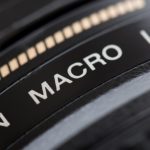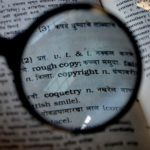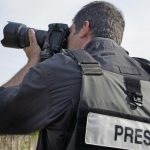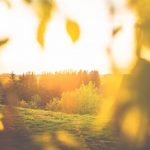Photography
Earning Extra Money as a Photographer

Even at the best of times, making a career through photography can be challenging. From an abundance of competition, to price sensitive clients, or even the growing trend where anyone who owns a mobile phone now considers themselves a photographer. You can see, it’s not easy. With that, photographers should consider diversifying their offer by extending into other services. Here are 5 ways you can earn extra money as a photographer. Run workshops There’s two different angles you can approach this from. If you’re a veteran photographer who has developed a skillset and portfolio that is the envy of your peers, you’re well positioned. This is because you have considerably greater flexibility in terms of your target audience and the prices you charge. On the other hand, if your career is still a work in progress, there may be opportunities to share your insights about the industry with beginners… | Read the full article
Tips for Macro Photography

There are times where you just want to incorporate that little bit extra detail into your photos. Macro photography is the perfect approach, while also a thoroughly challenging and enjoyable experience. Naturally, the process is all about a close up, but is macro photography really as straightforward as that? No, not really, but take heed of these points and you’ll deliver impressive results. Use a suitable support If you’re using a regular lens, one of the difficult aspects when shooting close ups at ground level is ensuring the camera remains steady. Rather than trying to find a support for your hands or body, instead consider one for your camera. For example, specialty tripods or even cushions and beanbags can be great as props to minimise any movement. Similarly, where appropriate, you can use one of your hands or a purpose made device to steady the object that you are… | Read the full article
Tips for Low Light Photography

As any photographer would know, it’s important to be versatile. Not only with one’s style of photography, but for the conditions with which they work. This includes low light conditions, which may be attributable to shooting: outdoors at night, indoors, or where there are varying sources of low–intensity light on offer. What’s more, low light photography skills are necessary for a variety of photographers, including those working with portraits, weddings and landscapes. Of course, a flash would appear a logical solution to deal with low light conditions. However, it’s not necessarily a fix that works in every situation. You see, a flash device, particularly when integrated into a camera, can sometimes result in a flat looking picture by compressing image depth. There are also the complications that come with a flash being distracting to the subject of a photo, as well as the potential need to set up and configure… | Read the full article
Copyright, Plagiarism and Ethics

With recent stories in the photography industry casting light on several controversies ‒ including: a renowned global photo competition being caught up in a plagiarism scandal; Marie Claire magazine using a photographer’s shot without her permission; and critically acclaimed photojournalist Souvid Datta “appropriating” others photographers’ work as his own ‒ it’s fair to say the industry has somewhat of an ‘image’ problem on its hands. Quite evidently, the blurred line over copyright and plagiarism is dividing photographers and other stakeholders, while the ethics of some is putting an asterisk next to their name and accomplishments. Although it’s hardly new for photographers to have their photos used by others, the nature of the problem has only been exacerbated in recent years with the surge in social media use. Nowadays, sharing a photo is merely a click or two away, meaning photographers are afforded less protection of their own work. Whereas… | Read the full article
Where Photographers Go Wrong in Photoshop

While the merit of Photoshop has long been debated by photographers, there’s little doubt that the decision is a personal choice. However, what is often overlooked from the conversation is the fact that photographers make mistakes which have the potential to undermine the impact of their work. So what are some of these mistakes? Continue reading to find out. Overprocessing Let’s talk about the elephant in the room first. Irrespective of whether you advocate for the use of Photoshop to edit your pictures, there is no bigger cardinal sin than overprocessing. One of the biggest areas concerns sharpness, where photographers seek to overcorrect for a very minor, and at times unnoticeable flaw. In turn, this often leads to the photo looking unrealistic. Other watchpoints concern adjustments to contrast, white balance and colours, plus poor bevel and emboss that again make the photo look less authentic. Not understanding layers… | Read the full article
4 Things to Avoid When Shooting Portraits

In just about every photographer’s career they try their hand at portraits. Whether it’s for personal or professional purposes, it’s a form of photography that can complement one’s skillset given its emphasis on lighting, composition and the like. However, despite being commonplace, it’s not unusual to see photographers make the same mistakes. Here are 4 things to avoid when shooting portraits. Distracting the viewer It might come as a surprise how many photographers try to incorporate too much external detail into their portrait shots. One of the biggest faux pas in this area is a ‘busy’ setting. While there are ways to incorporate a subject into a lively environment and still make them the focal point of the shot, it’s far from easy. Playing it safe and blurring the background via depth of field, or opting for neutral backgrounds is a sure way to maintain the viewer’s attention. Alternatively,… | Read the full article
Presenting Your Portfolio for Review

Portfolio reviews may be used as a showcase to prospective clients, and as appraisals that offer photographers an invaluable mechanism to receive feedback on their work. They can also form a critical step for photographers who are looking to monetise their work through art or digital enterprises. One of the first steps a photographer needs to acknowledge however, is whether they are ready to showcase their work for evaluation – be it by peers, partners or clients. After all, it is in our nature to create a lasting impression from our first encounters, so you want to be sure your work is a representation of your true abilities. At the same time, you also need to be prepared to discuss your work and create a strong bond with the other person. It goes without saying that you should put in the necessary preparation. But what exactly does this… | Read the full article
Why are my Photography Leads not Converting into Clients?

Despite our best efforts, sometimes we’re left scratching our heads pondering why our leads didn’t convert into clients. While this isn’t an issue restricted to the photography industry, the sheer volume of competition out there exacerbates this problem, particularly for new photographers who are yet to fill their books with clients. With this in mind, we consider three of the common reasons that photography leads don’t convert into clients. Too Many Options Ever been in a situation where you’re presented with so many options, you have difficulty making a decision? You haven’t? Well, perhaps surprisingly then, it’s worth knowing that too many options can confuse or overwhelm prospective clients. Contrary to what you might think, trying to cater for too many possibilities can be detrimental. This is most evident when clients are relying on you for your expert judgement. Consider simplifying your core offerings and pricing structure based on… | Read the full article
Controversial Photography Is Sometimes a Necessary Evil

Last month, the Word Press Photo of the Year was engulfed in controversy surrounding the selection of the winning entry. Voters were torn between advocating for an image that they believed gave publicity to martyrdom, whereas those who voted for the picture were taken aback by its impact and the photographer’s poise under significant duress. If you’re not familiar with the photo in question, Turkish photographer Burhan Ozbilici was on hand to witness and capture the assassination of Russia’s ambassador to Turkey by a local off-duty police officer. Photos depicting assassinations are nothing new to the World Press Photo Awards. In fact, several similar pictures previously featuring in the competition have taken out the top prize. While there is nothing comforting about the photo – which depicts the abhorrent actions some will undertake to further their own beliefs and causes – there are several aspects to consider beyond… | Read the full article
Natural Lighting vs Artificial Lighting

It’s an inevitable decision for just about every photographer at some point, particularly portrait photographers – should they use natural lighting, or artificial lighting? Of course, this is often a personal decision and one that photographers would choose for a variety of reasons depending on their circumstances. With that said, what exactly are the differences when shooting with the two different sources of lighting? Natural lighting that offered by way of the sun and the moon, is a readily available, free and accessible source for photographers to work with. There is no requirement to purchase significant gear or equipment. The exception to this might be diffusers and reflectors, which are designed to distort or enhance natural lighting – these are considerably cheaper than actual sources of lighting like strobes, LEDs and the like. Using natural light is also a great starting point for photographers looking to gauge and comprehend… | Read the full article
